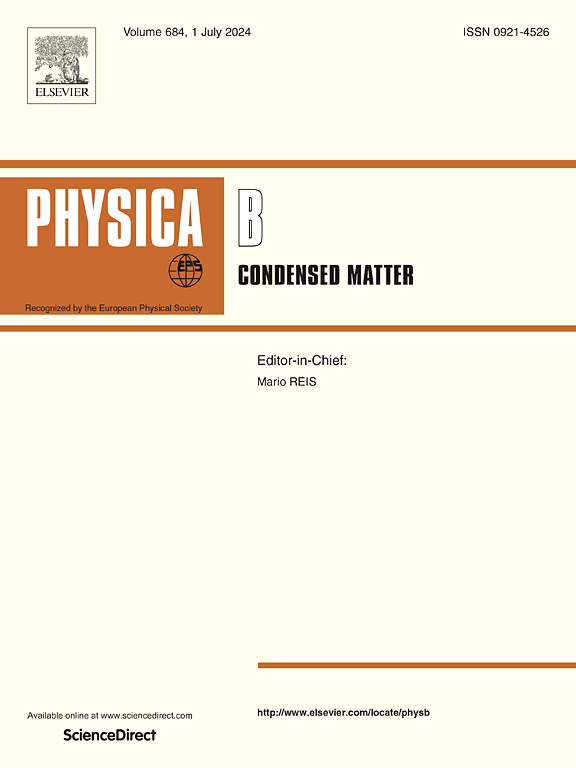Structural and magnetic properties of Fe100-xTix nanocrystalline powders prepared by planetary ball mill process
IF 2.8
3区 物理与天体物理
Q2 PHYSICS, CONDENSED MATTER
引用次数: 0
Abstract
Nanocrystalline Fe100-xTix (x = 0–25) powders are synthesized via a mechanical alloying process, and investigated their properties with varying milling times (tmill) and compositions (x). Structural studies revealed that Fe sites were substituted by Ti, resulting in the formation of nonequilibrium Fe(Ti) solid solutions with large dislocation density (1.2 × 1017m−2-2.2 × 1017m−2) and fine crystallites (∼10 nm). The determined lattice constant reveals significant disorders. Magnetic properties illustrate that coercivity (HC) increases up to a certain tmill and then decreases but increases progressively with x. This could be attributed to the development of dislocation density, grain boundary, and fine nanocrystals. Saturation magnetization (MS) diminishes with increasing tmill and Ti. HC and MS were found to be ∼0.40–4.01 kA/m and ∼2.156–1.291T, respectively, in the Fe100-xTix. These results are quite useful for understanding the effect of Ti in Fe100-xTix and possible applications in electric transformer cores, as soft magnetic inclusions in hard/soft exchange coupled spring permanent magnets, etc.
求助全文
约1分钟内获得全文
求助全文
来源期刊

Physica B-condensed Matter
物理-物理:凝聚态物理
CiteScore
4.90
自引率
7.10%
发文量
703
审稿时长
44 days
期刊介绍:
Physica B: Condensed Matter comprises all condensed matter and material physics that involve theoretical, computational and experimental work.
Papers should contain further developments and a proper discussion on the physics of experimental or theoretical results in one of the following areas:
-Magnetism
-Materials physics
-Nanostructures and nanomaterials
-Optics and optical materials
-Quantum materials
-Semiconductors
-Strongly correlated systems
-Superconductivity
-Surfaces and interfaces
 求助内容:
求助内容: 应助结果提醒方式:
应助结果提醒方式:


